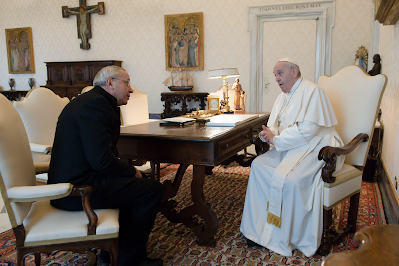As head of the Congregation for the Doctrine of the Faith and Pope, Benedict XVI took pioneering measures to punish priestly sexual abuse. In so doing, he overcame resistance from an old guard in the Vatican who clung to prior practice. In 2002, Benedict XVI (as CDF head) embraced the 'zero tolerance' approach pioneered (under heavy pressure) by American bishops, requiring priests be defrocked over a single case of verified sexual abuse. Benedict codified 'zero tolerance' as the approach of the universal Church in 2010. Benedict XVI (also as CDF head) allowed the statute of limitations to be waived for clerical abuse cases, allowing for expulsion based on abuse dating back decades. He created expedited procedures for abuse cases, dispensing with lengthy appeals. And Benedict XVI defrocked scores of sexually abusive clerics-- including powerful abusers who had been protected for decades such as Italian Father Gino Burresi, founder of the Servants of the Immaculate Heart of Mary, and Father Marcial Maciel Degollado, founder of the Legion of Christ. Both were adjudged guilty and barred from public ministry in the early months of Benedict’s papacy. Benedict XVI was also the first Pope to meet with victims of clerical sexual abuse, a gesture he repeated several times. Benedict also wrote on priestly sexual abuse prolifically and insightfully.
As in so many other areas, Pope Francis has undone all that progress. Faced with a high-profile case of serial sexual abuse by a powerful and famous cleric, muralist and priest Fr. Marko Rupnik, Pope Francis has protected the abuser at every step of the way. Scandalously, Francis has continued to do so even after the full scope of Rupnik's shocking abuse of 21 religious sisters and 15 other men and women was revealed in late 2022. Despite knowing of Rupnik's abuse, Francis has refused to lift the canonical statute of limitations to allow Rupnik to be canonically prosecuted. Despite knowing the role that the creation of his art played in Rupnik's horrible abuse of religious sisters, Francis and the Vatican have continued to promote Rupnik's grotesque iconography. On September 15 of this years, Francis met with Maria Campatelli, a fierce Rupnik defender and Director of the Aletti Center, founded by Rupnik. Then, on September 18, the Diocese of Rome issued a statement praising the Aletti Center and questioning the process by which Rupnik was briefly excommunicated.
Now comes the news that, having escaped any canonical penalty whatsoever, Rupnik has been incardinated into a diocese in his native Slovenia, allowed to operate with no restrictions whatsoever on his diabolical ministry. Further, this all happened in August-- meaning that Francis's gesture in September of meeting with Campatelli and then issuing the report, ostensibly from the Diocese of Rome, clearing the Aletti Center and questioning the basis for Rupnik's excommunication were indeed part of a closely-choreographed effort to clear Rupnik after he had been returned to active ministry, able to engage in sexual and psychological abuse with impunity.
This is not the first time that Francis has intervened to protect an abusive cleric who aligned with Francis and his liberal wing within the Church. The examples of Francis protecting such clerics are now legion. High-profile cases include Bishop Gustavo Zanchetta. Cardinal Theodore McCarrick, Bishop Carlos Belo, predator Bishop Michel Santier, and Fr. Carlos Buela. All are aligned with the liberal Francis wing of the Church. In addition, Francis elevated Tucho Fernandez to head of the now-renamed Dicastery for the Doctrine of the Faith, with competence to oversee abuse cases, despite the fact that Fernandez himself protected abusive clerics as Archbishop of La Plata in Argentina. In taking these actions, Francis has sided with the forces within the Vatican who do not wish for their to be any sort of crackdown on abuse.
Francis's attempts to change Catholic doctrine and teaching to embrace the sexual revolution should be considered in light of his laxity towards clerical sexual abuse. In rehabilitating Rupnik, Francis is putting into practice his philosophy that the Church should not be concerned with 'sins below the waist'-- even where such sins destroy the lives of victims. So too, the current Synod on Synodality, which included calls for changing Church teaching and discipline, and where any discussion of the abuse crisis was conspicuously absent, must be understood within Francis's larger record of tolerating sexual abuse within the Church. In this, as in so many other areas, Francis has reinforced the close linkage between loose doctrine and loose behavior, between lex orandi, lex credendi, and lex vivendi. The Church as a whole has been forced to re-learn this linkage since Vatican II, which preceded a drastic decline in Catholic belief and practice along with the abuse crisis.
The catastrophic Francis pontificate has seemingly brought the Church all the way back to 1517: wracked by internal abuses and on the verge of schism. But as in every historical crisis, the Church will find her footing, rebuild, and grow in holiness. In the meantime, we pray that God will deliver us from further scandal under this pontificate.
